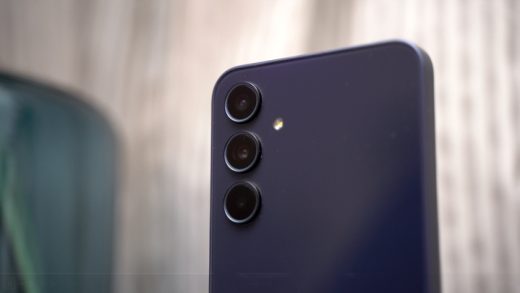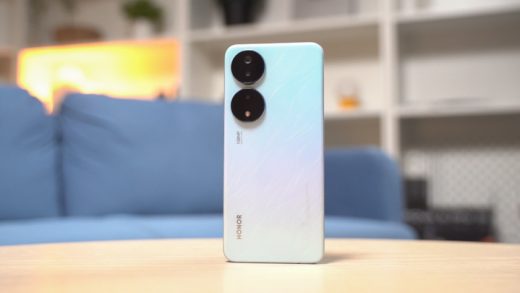Small form factor gaming PCs definitely have their advantages as they can pack a lot of power in a very small footprint, but also that if they’re from a reputable manufacturer such as ASUS ROG. they might just look really cool too. Enter the ASUS ROG G20CB. The model we’re reviewing has some slightly older hardware in its i7 Skylake processor and GTX 970, but that isn’t to say that the configuration is outdated at all.

The ROG G20CB we’re reviewing sports an older i7 Skylake processor and GTX 970, but that isn’t to say that configuration is severely outdated by late-2017 standards. At a volume of only 9.5-liters, this PC has an awesome futuristic design that’s aggressive, but could easily find a place in even minimalist gaming setups.
Table of Contents
Design and Construction
The G20CB has a very angular design overall, even in its air vents. Overall build quality is questionable since it is made of mostly plastic. While looking cool and futuristic, its design also packs some function into it, which we’ll discuss later on.

Up front for I/O, we have a slim DVD drive, two USB 3.0 ports, and the headphone and microphone jacks. On top of these is the power button, which strangely isn’t accompanied by a reset button. We also would have liked to see a Type-C port here, but even at the back, there isn’t one. On both sides of the front are two RGB LED strips under the angular mesh. They aren’t particularly bright, but the subtle glow works with the design nonetheless.

Moving to the rear, we have two USB 2.0 ports, two USB 3.0 ports, two Type-A USB 3.1 ports, 7.1 surround audio jacks, an ethernet port, and the dual DC power jacks. Our unit has a GTX 970, which provides three DisplayPort, one HDMI, and one DVI-D for video output.

Now, on the subject of the dual power jacks, what allows the G20CB to have such a small footprint is the absence of an internal power supply. ASUS decided to implement this dual power brick stack approach to deal with that. The reason we have two power bricks is that one of them exclusively provides power to our graphics card. Now, this sort of setup causes a minor inconvenience in that you need two free power outlets for one PC, but it’s the compromise the PC takes to be able to have such a small footprint. It actually only takes a 4.5-inch by 15-inch rectangular space on your desk.

As for upgradeability, the chassis can support a full-size GPU, has slots for single 3.5″ and 2.5″ drives, and has an M.2 PCIe slot. The components rest on a mini ITX H170 board, meaning there are only two RAM slots. In our case, upgrading to 16GB would be easy, since our unit was populated with a single stick of 8GB DDR4. The downside here is that opening it up to upgrade some parts is very difficult to do, and it will also void your warranty.
OS and Storage
Naturally, the OS that comes with this PC is Windows 10 Home Edition. When we first powered it on, we were treated right away to the Windows 10 Creator’s update, which does provide added functionality to the OS.

Bloatware is present, and unfortunately, we have to deal with McAfee anti-virus. ASUS Command is also present, which is a suite that handles updates, security, back-up, and others. For gaming, you’re provided with AEGIS II, which utilizes a series of widgets that allow you to monitor usage of system resources, control the RGB lighting, and more. For online gamers, you can use GameFirst III, an application that allows you to prioritize network usage for games.

Now that we’ve talked about the good stuff, it’s worth mentioning that ASUS App Box and ASUS Music Maker of all things, also come pre-installed.

Our unit has a 120GB SATA SSD and an empty 1TB 3.5″ HDD. Out of the box, the SSD has 85.9GB of free storage, while the 1TB hard drive comes empty.
Performance and Benchmarks
Under the hood, our G20CB is rocking an Intel Core i7-6700 clocked at 3.40GHz, 8GB of DDR4 RAM, and a NVIDIA GeForce GTX 970 with 4GB of VRAM. The CPU and GPU certainly aren’t current-generation, but they definitely held their own through the five AAA games we tested. At 1080p with considerably high graphics settings, it was able to keep framerates at an average of above 60fps, with the exception of Deus Ex: Mankind Divided and Metro: Last Light.

We also ran some synthetic benchmarks to further test performance. Check out the scores below.

Note: Our usual 3DMark and Adobe Premiere Export tests failed to complete.
For connectivity, we have Intel Ethernet and Wi-Fi, and Bluetooth 4.0. They all work just fine, and with a strong connection, online gaming using Wi-Fi is not a bad experience.
Thermals
We ran Prime 95 and FurMark for an hour each to test CPU and GPU temperatures, the i7-6700 actually managed to stay pretty cool at 62°C, but the GTX 970’s temperature skyrocketed to 87°C.

Despite this, we were justly surprised that the system didn’t really get as loud as we expected. The airflow inside the chassis was very balanced and followed an upward trajectory, allowing the heat to dissipate very evenly into the presumably empty space above the PC, assuming it rests on top of a desk.
Conclusion
The ASUS ROG G20CB is an awesome little machine that can easily find its place in both hardcore gaming battle-stations, as well as minimalist setups. Its harsh angles give it an aggressive look, but it definitely won’t look out of place. Its small footprint helps a great deal with desk space but doesn’t compromise on performance. The Maxwell-based variants can definitely handle even the most demanding modern AAA titles, but a Pascal graphics card will definitely make your system last a little longer.

The ASUS ROG G20CB (GTX 1070) is priced at Php99K.
ASUS ROG G20CB specs:
Intel Core i7-6700 (3.4GHz up to 4.0GHz/8MB Cache)
NVIDIA GeForce GTX 970, 4GB VRAM
8GB DDR4
1TB SATA HDD + 128GB SDD
Intel Gigabit Ethernet w/ GameFirst III
Intel dual-band 802.11 a/b/g/n/ac Wi-Fi
Bluetooth 4.0
Rear Ports:
2 x USB 2.0
2 x USB 3.0
1 x PS/2
1 x RJ45 Gigabit LAN w/ Killer LAN
6 x audio w/ S/PDIF
Front Ports:
2x USB 3.0
1 x microphone jack
1 x headphone jack
Slim DVD drive
Windows 10 Home
104 x 358 x 340 mm
6.38 kg
What we liked about it:
- Compact design and small footprint
- Upgrade path
- Aggressive, but not out-of-place design
- Great airflow
What we did not like:
- Hard to open, will void your warranty
- Expensive
- No Type-C ports
- Plasticky build
























